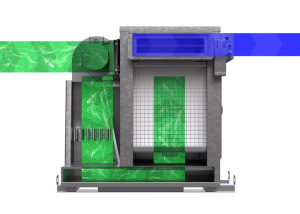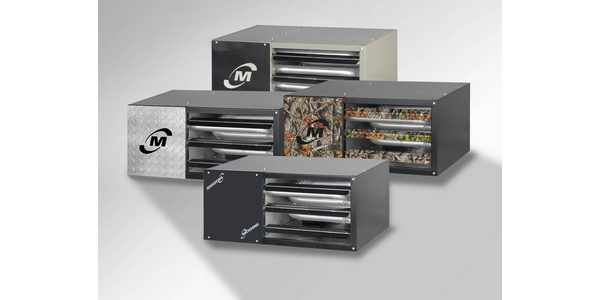Sorbent Media: Balancing IAQ and Energy Efficiency

By Greg DiNardo
It’s well documented that poor indoor air quality is directly linked to respiratory illnesses and sick leave, productivity losses and lower employee retention and student test scores. And while it took a pandemic to drive significant action to produce healthier air, IAQ is squarely in the spotlight. It’s central to the overall health of a building and its occupants.
At the same time, companies across the globe are accelerating efforts to decarbonize all aspects of their operations including facilities. Buildings are responsible for 40%percent of global carbon emissions and HVAC systems account for 36%percent of commercial building energy intensity. The COVID-19 pandemic only made things worse: as buildings increased ventilation rates and filtration, energy use also increased.
In short, COVID-19 has resurfaced and refocused the age-old tension between improving IAQ, and reducing energy use and carbon emissions.

The good news is that both are possible by cleaning indoor air before increasing ventilation rates. This is called “sustainable IAQ,” and the key means to that end is proven, efficient air cleaning of particles and gases. Cleaning the air first is a more energy-efficient way to achieve good IAQ in most climate zones and it is absolutely pivotal when the outside air is not fresh. From there, ventilation is added to maintain proper building pressure.
Advanced filtration and ultraviolet lighting are important IAQ tools. But this clean-first strategy has drawn attention to a well-established but underutilized technology, sorbents, as a key to cleaning indoor air and reducing ventilation energy use. A sorbent is a material designed to adsorb large amounts of a particular gas; activated carbon, silica gel and zeolite are well-known examples. For decades, sorbents have been used in a wide range of applications such as industrial process, food packaging and air cleaning in submarines and space shuttles. Add buildings to that list now.
The capacity of sorbents is mostly a result of their highly porous structure. The microscopic “nooks
and crannies” add up to an enormous amount of surface area, which increases the capacity to adsorb — in other words, to capture — gas molecules that come into contact with the material. One kilogram of activated carbon, for instance, can have a surface area equivalent to a few hundred football fields.
From an HVAC perspective, sorbent technology can be bolted on to existing hardware to supplement efforts to increase IAQ. However, it’s also being integrated into rooftop units to create packaged total-air-quality systems that combine the benefits of sorbent media with modern, energy-efficient RTUs. This helps solve a variety of common IAQ issues in buildings.
For example, when people breathe in oxygen, they exhale CO2. And when numerous individuals occupy a classroom or workspace for several hours, CO2 levels rise steeply. This not only has a significant impact on air quality, but can affect student performance. Off gassing from furniture, building materials and the like also introduces volatile organic compounds, such as formaldehyde, into the air.
Integrated sorbent media addresses these concerns by removing CO2, VOCs and other contaminants, capturing pollutants while allowing oxygen and water to pass through freely, resulting in cleaner air. When applied using ASHRAE’s IAQ Procedure, this provides the air changes needed for healthy indoor spaces, allowing building operators to decrease the volume of outdoor and total cooling load. A new IAQP update makes it even easier to improve IAQ and energy efficiency.
These systems can reduce outside ventilation by as much as 80%, providing greater control of humidity and comfort while trimming annual operating expenses by up to 30%, depending on the efficiency rating of the RTU. That truly is sustainable IAQ.
Greg DiNardo is IAQ solutions manager, Daikin Applied.


